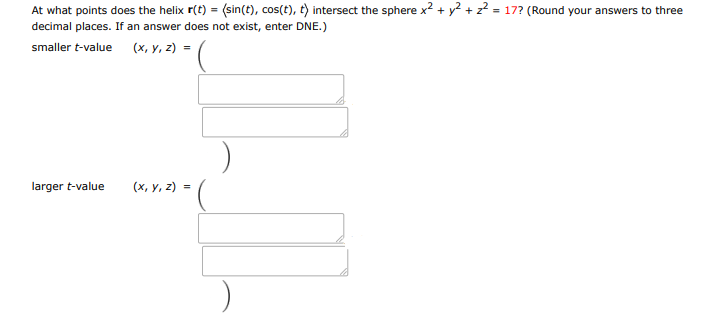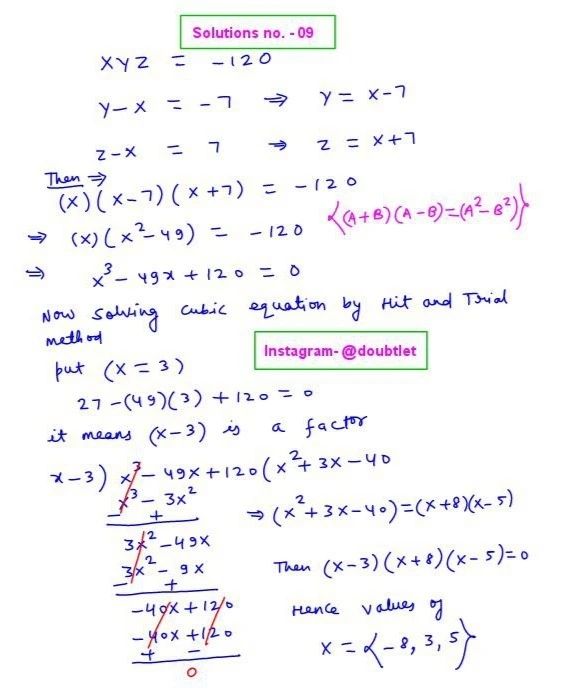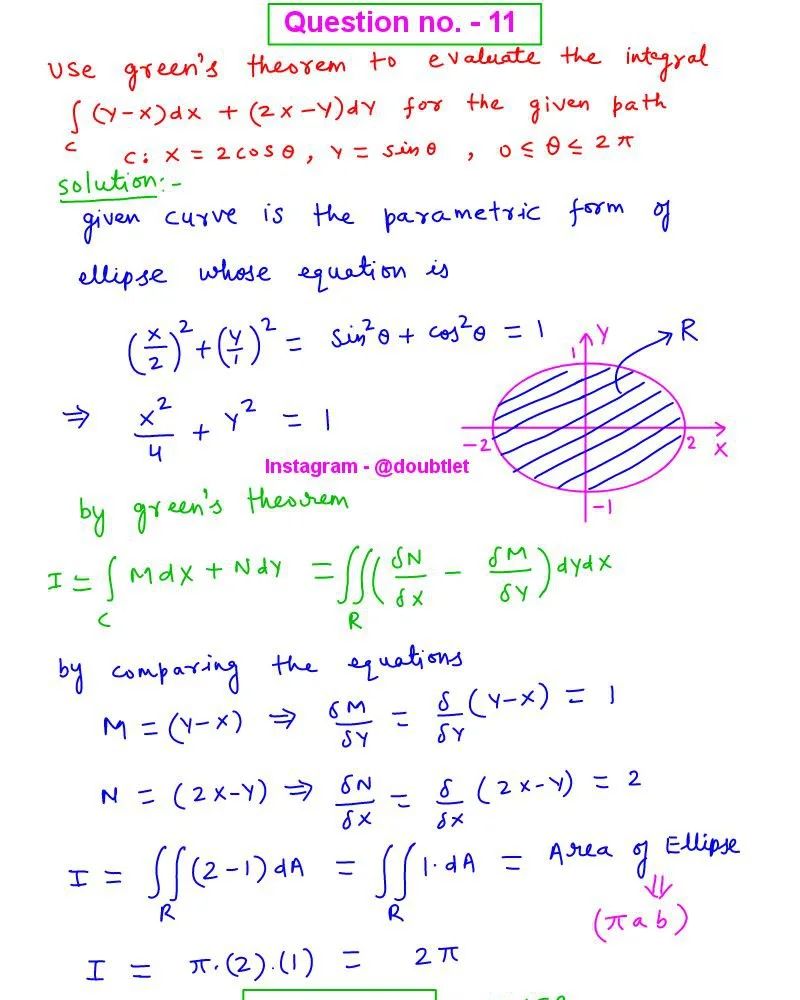









Question :
At what points does the helix intersect the sphere ? (round your answers to three decimal places. if an answer does not exist, enter dne.)
- smaller t-value
- larger t-value

Solution:

Neetesh Kumar | December 14, 2024
Calculus Homework Help
This is the solution to Math 1C
Assignment: 13.1 Question Number 9
Contact me if you need help with Homework, Assignments, Tutoring Sessions, or Exams for STEM subjects.
You can see our Testimonials or Vouches from here of the previous works I have done.
Step-by-step solution:
The vector equation for the helix is:
Thus, we have:
The equation of the sphere is:
Substituting the components of the helix into the equation of the sphere:
Using the Pythagorean identity , we get:
Solving for :
Taking the square root of both sides:
Step 1: Find the points corresponding to and
For :
Thus, the point for is approximately .
For :
Thus, the point for is approximately .
Final Answer:
smaller t-value
larger t-value
Please comment below if you find any error in this solution.
If this solution helps, then please share this with your friends.
Please subscribe to my Youtube channel for video solutions to similar questions.
Keep Smiling :-)
Comments(0)



Leave a comment